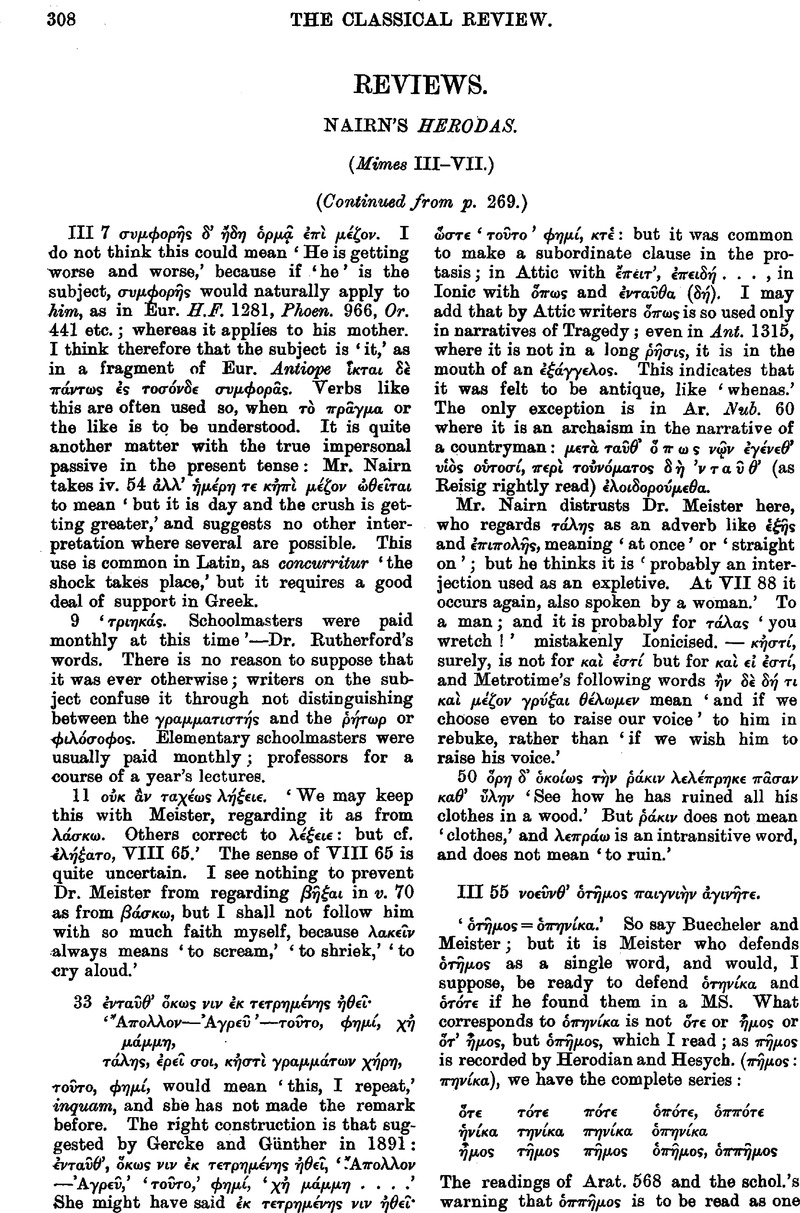Published online by Cambridge University Press: 27 October 2009

page 310 note 1 ⋯ντα⋯θα διατρ⋯βειν in Arist 1371b 31, λαμπρ⋯ς τ⋯στ⋯ν in Plat. Gorg. 484 E.
page 311 note 1 So did Prof. Hardie (though with quite a different interpretation) in Acad, Oct. 31, 1891, including, perhaps rightly, αὕτη.
page 311 note 2 For this Liddell and Scott give ‘σιοκ⋯μος, Lacon. for θεο-κ⋯μος, with hair like the gods.’ But in Liddell and Scott, as I have said, nothing is surprising.
page 311 note 3 I should much like to know who Mr. F. D. is.
page 312 note 1 See Thesaur. s.v. ⋯δ⋯ω, and add Hesych. IV p. 318 Schmidt, and p. 332 ⋯σθησεν: ⋯θησεν. ἔπρασεν, probably for ὣδησεν: ὣπρσεν (aorist of πιπρ⋯σκω).
page 314 note 1 Perhaps κρινοκορώκα, but κριν⋯κα would be enough; cf. Strabo 321 on κρ⋯νακος.
page 316 note 1 C.R. xv. 402 and xvi. 28. A form I did not then know is κοινεών, restored by Scaliger in Eur. H.F. 149 ![]() (so Heath) and 339
(so Heath) and 339 ![]() Scaliger). There should be no hesitation now in accepting this: cf. Aesch. fr. 99. 6
Scaliger). There should be no hesitation now in accepting this: cf. Aesch. fr. 99. 6 ![]() , Kaibel Ep. p. 521
, Kaibel Ep. p. 521 ![]() .
.